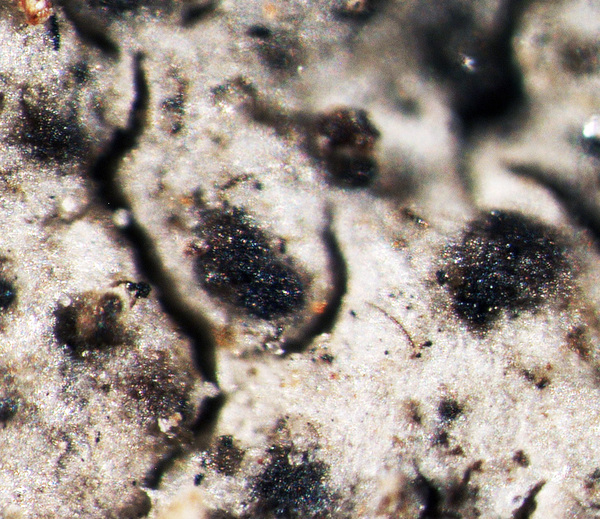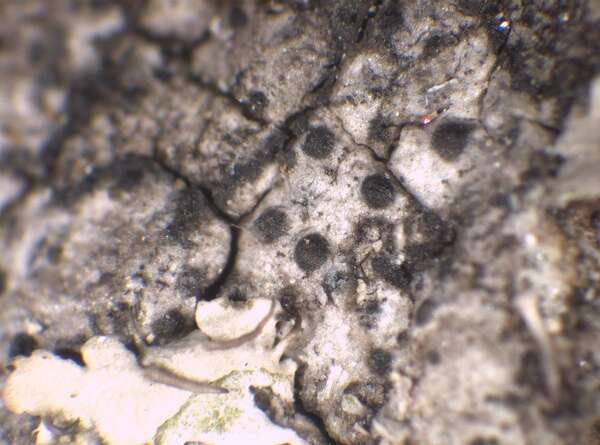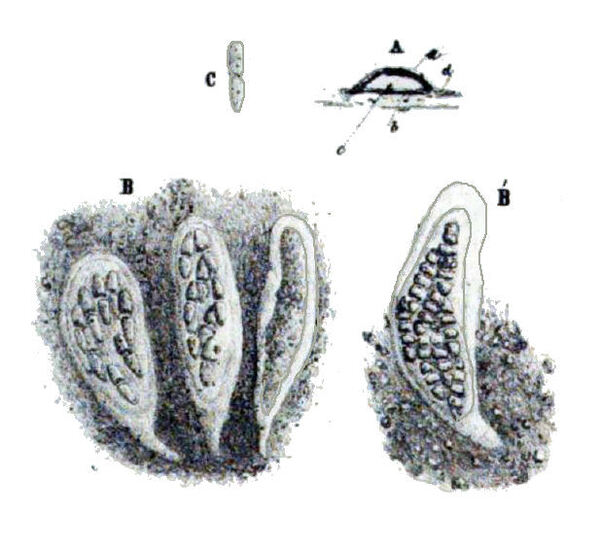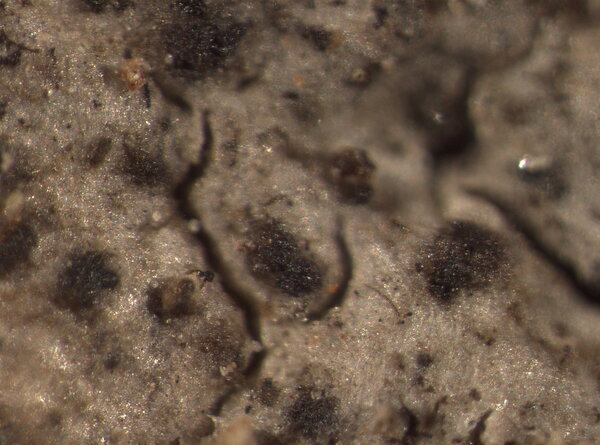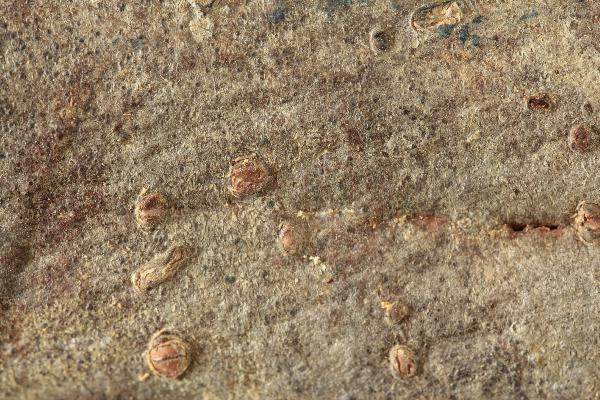Arthopyrenia grisea (Schaer.) Körb.
Syst. Lich. Germ.: 369, 1855. Basionym: Verrucaria epidermidis var. grisea Schleich. ex Schaer. - Lich. Helv. Spicil., 2: 56, 1826.
Synonyms: Arthopyrenia betulae A. Massal.?; Arthopyrenia persoonii var. caricae A. Massal.; Arthopyrenia persoonii var. episcia A. Massal.; Arthopyrenia persoonii var. mali A. Massal.;; Arthopyrenia persoonii var. pancina A. Massal.; Arthopyrenia pluriseptata auct. p.p. non (Nyl.) Arnold; Sagedia grisea (Schaer.) Anzi
Distribution: N - VG (TSB 31124), Ven (Lazzarin 2000b), TAA (Nascimbene & al. 2007b), Lomb, Piem (Isocrono & al. 2004, Giordani & Malaspina 2016). C - Marc (Frati & al. 2004, Frati & Brunialti 2006), Sar (E.C.I., 2, 120: S- F74453).
Description: Thallus crustose, inapparent or slightly bleaching the bark, not lichenized. Perithecia black, usually circular, 0.3-0.4 mm across, almost totally immersed Involucrellum dimidiate, brown, K-, of compacted hyphae and bark cells; exciple thin, usually colourless, surrounding the centrum; pseudoparaphyses slender, branched and anastomosing above the asci; downwardly projecting periphysoids present near the ostiole. Asci 8-spored, obpyriform, fissitunicate, with two functional wall layers, c. 60 x 15 μm. Ascospores at first 1-septate, then 3-septate, hyaline, clavate with rounded apices, (15-)20-22(-23) x 5-6(-7) μm, surrounded by an up to 1 μm thick perispore. Photobiont absent. Spot tests: thallus K-, C-, KC-, P-, UV-. Chemistry: without lichen substances.Note: an early coloniser of smooth and acid bark, especially of Betula, doubtfully lichenised. The type of A. betulae should be checked: if identical with this species, the Massalongian name would have priority. It is included in the Italian red list of epiphytic lichens as “Endangered” (Nascimbene & al. 2013c).
Growth form: Fungus
Substrata: bark
Reproductive strategy: mainly sexual
Pioneer species
Commonnes-rarity: (info)
Alpine belt: absent
Subalpine belt: extremely rare
Oromediterranean belt: absent
Montane belt: very rare
Submediterranean belt: extremely rare
Padanian area: absent
Humid submediterranean belt: absent
Humid mediterranean belt: absent
Dry mediterranean belt: absent

Predictive model
Herbarium samples
Growth form: Fungus
Substrata: bark
Reproductive strategy: mainly sexual
Pioneer species
Commonnes-rarity: (info)
Alpine belt: absent
Subalpine belt: extremely rare
Oromediterranean belt: absent
Montane belt: very rare
Submediterranean belt: extremely rare
Padanian area: absent
Humid submediterranean belt: absent
Humid mediterranean belt: absent
Dry mediterranean belt: absent

Predictive model
| Herbarium samples |
 INDEX FUNGORUM
INDEX FUNGORUM
 GBIF
GBIF
 DOLICHENS
DOLICHENS
